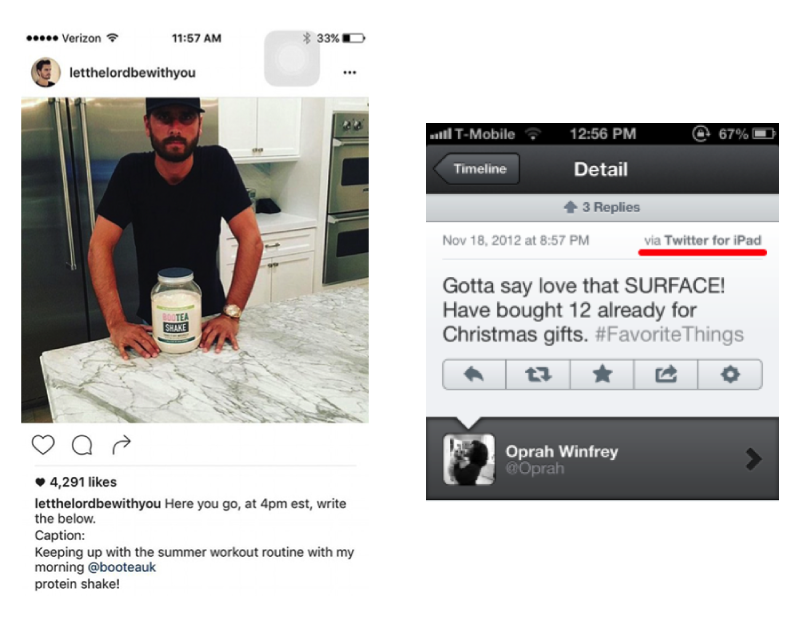Advertising campaigns are often heralded for their creative ingenuity, but you never would have seen those ads had a media department not researched, planned and executed the media buy to make sure the right people actually see it. As technology has grown over recent years, there are many more places for brands to advertise to consumers. At the same time, there also is growing consumer discontent with the frequency, type and intrusion of ads. This is why brands must focus on all aspects of their advertising strategy, ensuring that not only the theme is right, but perhaps just as importantly, the timing, targeting, audience and delivery also are on target.
Timing
On Monday, September 4, 2017, the Monday of the opening weekend of college football, Tennessee played Georgia Tech in the brand new Mercedes-Benz Stadium, but football wasn’t the only competition that took place. BMW – Mercedes’ biggest competitor – played a little game of their own. Not only did BMW sponsor portions of ESPN’s broadcast, it also ran ads in numerous commercial breaks (a smart strategy to steal the show from its fellow German automaker). The puzzling piece: BMW’s ads were promoting their Labor Day sale, driving prospects to their local dealership to take advantage of a promotion that already had ended (given that the game was played the night of Labor Day).
BMW’s mistake highlights the importance of ensuring your ads are timely. When running a promotion, timing is everything. If you’re paying to run during a particular schedule, running the incorrect ad can be detrimental to your strategy and your bottom line. For example, make sure the ads for your Fourth of July special end prior to the store closing (if not slightly before).
Targeting
Just as you don’t want an ad to reach the wrong demographic, you don’t want to associate your brand with violent or tragic content. Brand safety is a huge concern for advertisers on a host of platforms. If your brand isn’t careful, you can leave your consumers with negative connotations when an ad is served with content that is not right for your brand. Even when a placement makes sense contextually, there are barriers that can be put in place to protect your brand from running alongside tragedies, social issues and other questionable content.

Audience
Making sure that the message of your ad resonates with your target audience and aligns with your brand’s values is critical. Conceptually, Levi developed a great campaign that made sense for the brand. They touted their new line of jeans in different fits for women of different shapes and sizes – an important effort and topic of conversation in today’s world and media landscape. The visual representation of this new line fell short, even coming off as offensive to some women. Instead of choosing women who would represent their message, Levi chose models that many female consumers felt did not represent women of all body types, resulting in criticism for the denim brand.

Using data to your advantage can be extremely effective for all types of advertising campaigns. Targeted data used properly is critical and can make a positive impact on consumer relationships; data used incorrectly can do the opposite. For example, if you purchase an outfit for your precious newborn niece, that doesn’t make you a new mother. However, data providers look at purchase behaviors to identify consumer profiles–and thus, if a new aunt buys new born bottles, baby blankets and bibs, there is a likelihood she will receive “Congrats on the new bundle of joy!” emails, mailers, display ads, etc. Take a cue from Amazon’s recent mistake and make sure that your targeting efforts (and digital platforms) are on-strategy and functioning correctly.
Delivery
As the world of digital access and social media has grown, consumers have become accustomed to having any data they want at their fingertips, which has resulted in a growing desire for transparency and authenticity. Influencer marketing has seen tremendous growth, as influencers are a more natural and authentic way for brands to extend themselves into consumers’ lives. Although most consumers recognize sponsored posts when they see them, consumers tend to be more receptive to these types of ads compared to other paid advertisements, as they feel more native to the user experience.

Influencers are human too, and mistakes can happen if you aren’t careful. When they do, social-savvy consumers are likely to immediately hold the brand accountable. Brands need to ensure that all parties are on the same page to not make the same mistake the influencers pictured did, especially when working with an influencer as high-profile as Oprah (as someone on her publicity team is likely publishing content on her behalf). Tweeting from an iPad – Microsoft Surface’s direct competitor – was a completely avoidable mistake. Meanwhile, Scott Disick’s social media copy and paste job could maybe have used a bit more clarity about the difference between instructions and caption content.
No one wants to be the one to shoot down an idea, but thinking through and expressing all the ways a campaign can go wrong – both from a creative perspective and media strategy perspective – is extremely important. This allows brands to stay out of controversy and avoid preventable situations, and most definitely ensuring a plan is in place in case something out of the company’s control arises. Take adequate time to ask questions, then plan and ask questions again to ensure your campaign goes according to strategy and doesn’t garner negative attention.
